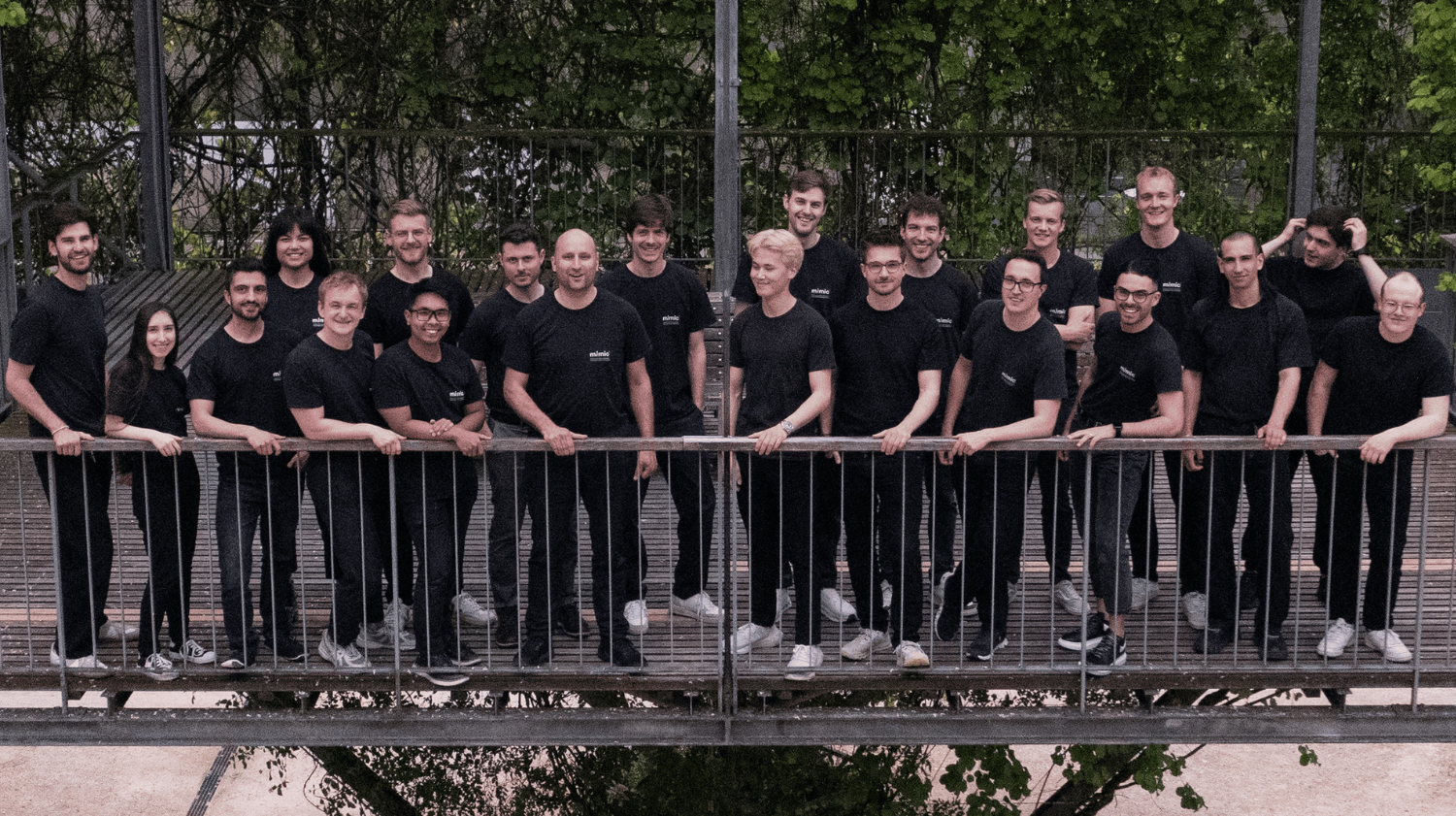
Robotics innovator Mimic has raised $16 million (€13.8 million) in an oversubscribed seed round led by Elaia, with participation from Speedinvest, Founderful, 1st Kind, 10X Founders, 2100 Ventures, and the Sequoia Scout Fund.
The round brings Mimic’s total funding to over $20 million since its founding in 2024.
The Swiss startup is pioneering physical AI systems that enable industrial robots to perform dexterous, human-like manipulation tasks — a leap beyond traditional automation. The new funding will support the development of Mimic’s foundation AI model, advance its robotic hand technology, and expand large-scale collaborations with global manufacturing and logistics partners.
Teaching Robots to Learn Like Humans
The company’s approach is grounded in learning from human demonstration. Skilled operators wear custom motion-capture devices that record how humans move, handle, and interact with objects during real production work. This data feeds Mimic’s imitation learning models, enabling robots to replicate complex manual actions and adapt dynamically to new scenarios — all without disrupting factory operations.
“We’re at an inflection point in robotics where learning-based systems finally meet real industrial needs,” said Stefan Weirich, co-founder and CEO of Mimic.
“We make dexterity deployable at scale — bridging the gap between what AI can do in the lab and what factories actually need. Europe has the talent, infrastructure, and demand to lead this new wave of automation.”
AI-Driven Dexterity for the Real World
While humanoid robots often dominate headlines, Mimic’s focus is pragmatic and modular.
“Humanoids are exciting, but full-body robots aren’t needed for most industrial use cases,” explained Stephan-Daniel Gravert, co-founder and CPO. “By pairing AI-driven dexterous hands with proven, off-the-shelf robotic arms, we can deliver human-level manipulation that’s simpler, more reliable, and rapidly deployable.”
Mimic’s foundation model for robotics and dexterous robotic hands are being piloted across industries such as manufacturing, assembly, and logistics, where flexible automation is essential. These systems are designed to operate autonomously in environments originally built for human workers.
“Our general-purpose AI models make it possible to automate manual labor in ways that were simply not possible before,” added Elvis Nava, co-founder and CTO. “By focusing on human-like dexterity and training on real-world human data, we’re competitive both at the foundation model layer and the application layer.”
Backed by Deep-Tech and Industry Leaders
Investors see Mimic as a critical player in Europe’s next generation of industrial AI.
“Mimic combines world-class research with real engineering pragmatism,” said Andreas Schwarzenbrunner, General Partner at Speedinvest. “They’re solving billion-dollar problems on factory floors by unlocking human-level dexterity with frontier AI. This is Europe’s moment to lead in robotics.”
“The world-class team at Mimic is tackling one of the hardest problems in physical AI — dexterous manipulation,” said Clément Vanden Driessche, Partner at Elaia. “Their fusion of proprietary robotic hands, foundation models, and new training methods opens up vast, untapped markets for flexible automation.”
From ETH Zurich Lab to Factory Floor
A spin-out from ETH Zurich, Mimic is led by a team of 25 engineers and researchers including Stefan Weirich (CEO), Stephan-Daniel Gravert (CPO), Elvis Nava (CTO), Benedek Forrai (Founding Engineer), and Robert Katzschmann (Scientific Advisor). The company has also received support from Switzerland’s federal innovation agency and participated in the AWS Generative AI Accelerator.
Mimic’s technology is already being piloted by Fortune 500 companies, global automotive leaders, and multinational logistics firms, with the goal of making dexterous robotic automation a scalable reality.
About Mimic
Mimic is a Zurich-based robotics company developing embodied AI systems that bring human-like dexterity to industrial automation. Its platform combines foundation models, robotic hands, and human demonstration data to teach robots how to perform complex manual tasks intuitively and autonomously.


